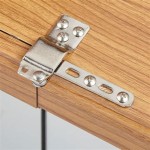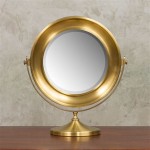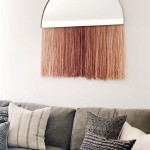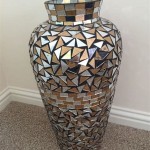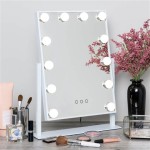Are Mirror TVs Any Good?
Mirror TVs represent a fascinating intersection of technology and interior design. They offer the dual functionality of a standard television and a reflective mirror, providing a sleek, space-saving solution for homes and businesses. However, with this innovative technology comes a series of considerations regarding their practicality, performance, and overall value. This article will explore the various aspects of mirror TVs to help determine if they are a suitable option for your needs.
Image Quality and Reflectivity
One of the primary concerns with mirror TVs is the balance between reflectivity and image quality. When the television is off, the mirror's reflective quality is paramount. High-quality mirror TVs use specialized glass with minimal distortion, providing a clear, accurate reflection. However, when the television is on, the image quality needs to be comparable to a standard TV. This requires a delicate balance in the manufacturing process, as the reflective coating can impact the vibrancy and clarity of the displayed image. The technology has improved significantly over the years, but some compromise is often inevitable. Potential buyers should consider the primary function of the unit – is it primarily a mirror or a television? This will help determine the acceptable level of compromise in either reflection quality or image display.
Installation and Placement
Installing a mirror TV requires careful planning and, in some cases, professional assistance. The weight of the unit, combined with the fragile nature of the glass, necessitates secure wall mounting. Furthermore, the placement of the TV needs to consider both viewing angles for optimal image quality and lighting conditions for ideal reflection. Excessive ambient light can wash out the displayed image, while insufficient light can diminish the mirror's effectiveness. Professional installers can assess the environment and recommend the best location and mounting method for optimal performance.
Technology and Features
Mirror TVs incorporate a variety of technologies to achieve their dual functionality. The most common approach involves a two-way mirror layered over a standard LCD or LED display. When the television is off, the mirror reflects light, and when the television is on, light from the display passes through the mirror. The quality of these components directly impacts the overall performance of the mirror TV. Advanced models now include features like 4K resolution, smart TV functionality, and integrated sound systems, further enhancing their versatility and user experience. Consumers should carefully evaluate these features and compare them to standard televisions to ensure they are receiving adequate value for the added cost.
Cost Considerations
Mirror TVs are generally more expensive than comparable standard televisions. The specialized manufacturing process and the integration of the reflective surface contribute to the higher price point. Furthermore, installation costs can be higher due to the weight and fragility of the units. Potential buyers need to weigh the added cost against the aesthetic and space-saving benefits offered by mirror TVs. Budgeting for professional installation is also recommended to ensure safe and secure mounting.
Maintenance and Durability
Maintaining a mirror TV requires similar care to a standard mirror and a television. The reflective surface requires regular cleaning with appropriate glass cleaners to maintain its clarity. The electronic components need to be protected from moisture and excessive dust. The lifespan of a mirror TV depends on the quality of its components and the frequency of use. Reputable manufacturers typically offer warranties, which provide some protection against defects and malfunctions. Understanding the maintenance requirements and warranty coverage is essential before investing in a mirror TV.
Aesthetics and Interior Design
The primary appeal of mirror TVs lies in their aesthetic contribution to interior design. They can seamlessly blend into any room, adding a touch of elegance and modernity without dominating the space. In smaller rooms or apartments, they can create the illusion of more space by reflecting light and surrounding décor. They can also be incorporated into custom furniture or concealed within walls, offering a truly integrated and hidden entertainment solution. For those prioritizing aesthetics and space optimization, the design benefits can outweigh the potential drawbacks of cost and image quality compromises.
Applications and Use Cases
Mirror TVs find application in a variety of settings, both residential and commercial. In homes, they are commonly used in bathrooms, bedrooms, and living rooms. In commercial settings, they are frequently used in hotels, gyms, and retail stores. Their versatility allows them to serve both functional and decorative purposes. Understanding the intended use case is crucial in selecting the appropriate size, features, and installation method for a mirror TV. For instance, a bathroom installation requires different considerations than a living room installation regarding moisture resistance and viewing distance.

Are Mirror Tvs Any Good Sg Interior Designers Previously Overmantels

Are Mirror Tvs Any Good Sg Interior Designers Previously Overmantels

70 Framed Samsung Mirror Tv Television

Everything You Need To Know About Mirror Tvs

Are Mirror Tvs Any Good Sg Interior Designers Previously Overmantels

Samsung Mirror Tv Complete Guide For 2024 Models

Mirror Tv How It Works Joseph Mccarthy Mirrors

Mirror Tv Television Pro Display

Mirror Tv Television Pro Display

Mirror Tvs Direct From The Manufacturer Tv In Disguise


